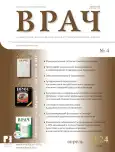Botulinum toxin in modern cosmetology practice: from high efficiency to the problem of complications (analysis of clinical observation)
- Authors: Tlish M.M.1, Sashko M.I.1, Shavilova M.E.1, Katz Y.I.2, Psavok F.A.1
-
Affiliations:
- Kuban State Medical University, Ministry of Heath of Russia
- Beauty Alliance South LLC
- Issue: Vol 35, No 4 (2024)
- Pages: 67-71
- Section: From Practice
- URL: https://journals.eco-vector.com/0236-3054/article/view/632162
- DOI: https://doi.org/10.29296/25877305-2024-04-13
- ID: 632162
Cite item
Abstract
At the present stage, there has been an increase in the popularity of wrinkle correction using botulinum toxin, which is largely due to the quick and long-lasting result of this procedure. The accumulated scientific and practical experience shows that cosmetic injections of botulinum toxin are rarely accompanied by complications. However, due to the high demand for procedures and the significant commercialization of this area, cases of its implementation by persons without proper professional education and using non-certified injectables have become more frequent. This often leads to undesirable consequences of the procedure and late treatment of such patients in specialized medical institutions.
The article focuses on the fact that a prerequisite for this procedure is a high level of qualification of a dermatocosmetologist, the obligatory observance of the injection technique and the use of only certified medical preparations. In order to inform healthcare professionals about this problem, we present our own clinical observations of patients with complications after botulinum toxin injections performed by non-medical personnel.
Full Text
About the authors
M. M. Tlish
Kuban State Medical University, Ministry of Heath of Russia
Author for correspondence.
Email: marina@netzkom.ru
ORCID iD: 0000-0001-9323-4604
MD, Professor
Russian Federation, KrasnodarM. I. Sashko
Kuban State Medical University, Ministry of Heath of Russia
Email: marina@netzkom.ru
ORCID iD: 0000-0002-5127-1519
Candidate of Medical Sciences
Russian Federation, KrasnodarM. E. Shavilova
Kuban State Medical University, Ministry of Heath of Russia
Email: marina@netzkom.ru
ORCID iD: 0000-0002-5776-6221
Candidate of Medical Sciences
Russian Federation, KrasnodarYu. I. Katz
Beauty Alliance South LLC
Email: marina@netzkom.ru
ORCID iD: 0009-0006-5900-7890
Russian Federation, Krasnodar
F. A. Psavok
Kuban State Medical University, Ministry of Heath of Russia
Email: marina@netzkom.ru
ORCID iD: 0000-0002-9556-1956
Candidate of Medical Sciences
Russian Federation, KrasnodarReferences
- ISAPS. Global survey 2020: full report and press releases. URL: https://www.isaps.org/ru/discover/about-isaps/global-statistics/reports-and-press-releases/global-survey-2020-full-report-and-press-releases-english
- Naik P.P. Utilities of Botulinum Toxins in Dermatology and Cosmetology. Clin Cosmet Investig Dermatol. 2021; 14: 1319–30. doi: 10.2147/CCID.S332247
- Трубилина М.М., Зенкина О.Ю., Породенко О.Н. и др. Организация лечения детей со спастическими формами детского церебрального паралича препаратом ботулинического токсина типа А в Краснодарском крае. Кубанский научный медицинский вестник. 2017; 1 (2): 128–31 [Trubilina M.M., Zenkina O.U., Porodenko O.N. et al. Organization of treatment of children with spastic forms of cerebral palsy by botulinum toxin type A in Krasnodar region. Kuban Scientific Medical Bulletin. 2017; 1 (2): 128–31 (in Russ.)]. doi: 10.25207/1608-6228-2017-2-128-131
- Lewandowski M., Swierczewska Z., Barańska-Rybak W. Off-label use of botulinum toxin in dermatology – current state of the art. Molecules. 2022; 27 (10): 3143. doi: 10.3390/molecules27103143
- Zargaran D., Zoller F.E., Zargaran A. et al. Complications of facial cosmetic botulinum toxin A injection: analysis of the UK Medicines & Healthcare Products Regulatory Agency registry and literature review. J Plast Reconstr Aesthet Surg. 2022; 75 (1): 392–401. doi: 10.1016/j.bjps.2021.05.074
- Борзых О.Б., Петрова М.М., Шнайдер Н.А. и др. Проблемы внедрения персонализированной медицины во врачебной косметологии в России. Сибирское медицинское обозрение. 2021; 2: 12–22 [Borzykh O.B., Petrova M.M., Shnayder N.A. et al. Problems of implementation of personalized medicine in medical cosmetology in Russia. Siberian Medical Review. 2021; 2: 12–22 (in Russ.)]. doi: 10.20333/2500136-2021-2-12-22
- Kumar N., Parsa A.D., Rahman E.A systematic review on the current trend in nonsurgical aesthetic training for knowledge, skill, and professional identity formation. Aesthet Surg J. 2022; 42 (9): 1056–63. doi: 10.1093/asj/sjac020
- Kassir M., Gupta M., Galadari H., et al. Complications of botulinum toxin and fillers: A narrative review. J Cosmet Dermatol. 2020; 19: 570–3. doi: 10.1111/jocd.13266
- Sanchis-Bielsa J.M., Bagan J.V., Poveda R. et al. Foreign body granulomatous reactions to cosmetic fillers: a clinical study of 15 cases. Oral Surg Oral Med Oral Pathol Oral Radiol Endod. 2009; 108 (2): 237–41. doi: 10.1016/j.tripleo.2009.03.032
- Thanasarnaksorn W., Rattakul B., Suvanasuthi S. et al. Botulinum toxin type A injection-related suppurative granuloma: a case report. J Cosmet Laser Ther. 2019; 21 (7-8): 422–4. doi: 10.1080/14764172.2019.1690663
- Caldas Pozuelo C., Dominguez De Dios J., Mota Rojas X. Multiple oral granulomatous nodules to hyaluronic acid filler. J Cosmet Dermatol. 2020; 19: 3453–5. doi: 10.1111/jocd.13734
- Пескова И.В. Филлеры и ботулотоксин – «звездный дуэт» эстетической медицины. Инъекционные методы в косметологии. 2014; 3: 57–70 [Peskova I.V. Fillers and botulinum toxin – the «star duet» of aesthetic medicine. Injection methods in cosmetology. 2014; 3: 57–70 (in Russ.)].
- Modarressi A., Nizet C., Lombardi T. Granulomas and nongranulomatous nodules after filler injection: different complications require different treatments. J Plast Reconstr Aesthet Surg. 2020; 73 (11): 2010–5. doi: 10.1016/j.bjps.2020.08.012
Supplementary files









